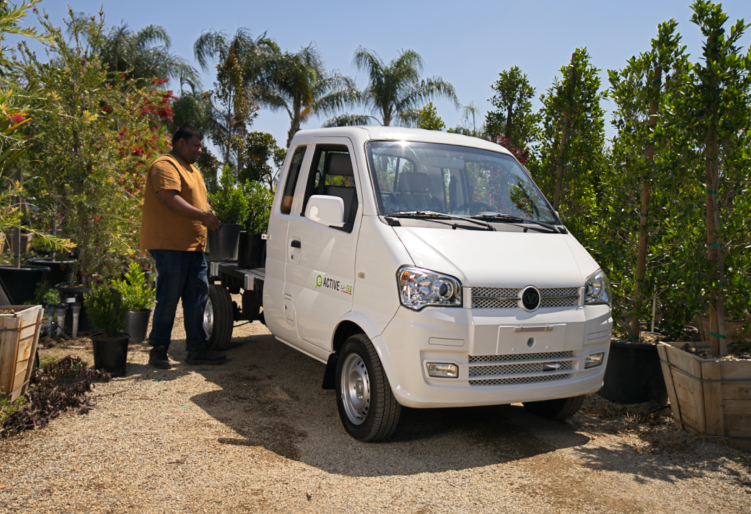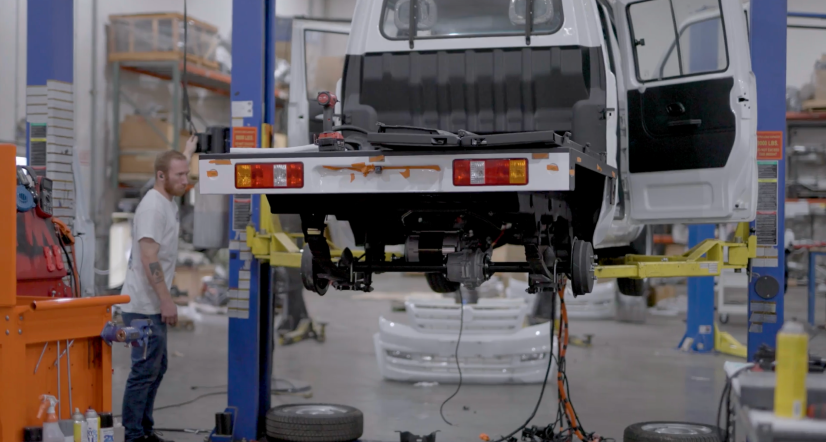Top Maintenance Tips for Your Low-Speed Vehicle

Keeping a low-speed vehicle (LSV) in good condition doesn’t have to be complicated. With the right habits, you can extend the lifespan of your fleet or personal runabout, improve safety for drivers and passengers, and cut down on repair costs. Let’s explore some simple vehicle maintenance tips that will keep your LSV running smoothly.
Daily Vehicle Upkeep
A short pre-shift walkaround or morning check can prevent unexpected breakdowns. Spending just 90 seconds each day on essential vehicle upkeep keeps operations smooth and reliable.
- Tires: Look for damage such as bulges or deep cuts. If a tire seems noticeably soft, check the pressure before driving.
- Lights and signals: Switch on the headlights and indicators to confirm they respond quickly.
- Safety systems: Wipe the backup camera lens, listen for the pedestrian and reverse alarms, and test that seat belts latch securely.
- Leaks: Take a quick glance under the vehicle for fresh spots of oil or other fluids.
- Charge port or fuel cap: On electric LSVs, make sure the charging port is clean and the cable latch intact. On gas units, check that the fuel cap seals tightly.
- Upfits secure: Tug once on racks, dump beds, or hoppers to confirm they’re locked down.
- Visibility: Clean the windshield and adjust mirrors for a clear view.
These simple daily checks can catch a lot of basic problems before they disrupt service.
Weekly Vehicle Upkeep

Taking 10 minutes each week for deeper checks adds another layer of protection.
- Check tire pressure and tread: Use a gauge to set tires to spec. Proper inflation not only improves safety but can increase range by up to 10% on electric low-speed vehicles. Rotate on schedule to keep wear even.
- Test the brakes: Pay attention to pedal feel. A spongy pedal or longer stopping distance may signal worn pads or fluid issues.
- Inspect suspension parts: Look over rear leaf springs and front strut mounts for looseness or rust.
- Top off fluids: Keep washer fluid full, and for gas-powered units, confirm coolant levels are stable.
- Review charging gear: For electric LSVs, inspect cords for nicks and check strain relief at the connector. Always unplug by the handle, not the cable. For ABS systems, the ABS light should come on briefly at startup, then go out. If it stays on, schedule service.
Weekly checks are especially valuable for fleets of electric utility maintenance vehicles that log heavy daily use.
Monthly Vehicle Upkeep
Every month, take time to perform system-level checks. These go beyond walkarounds and help prevent failures.
For electric LSVs:
- Battery care: Operate within 20%–80% state of charge for best cycle life. Avoid repeated deep discharges.
- Charging equipment: Inspect the charge port and cables. For Vantage electric low-speed vehicles, check the 110–240 V, 20-amp circuit and optional J1772 inlet.
- Controller and wiring: Look for chafed harnesses or loose connectors near the traction controller.
- Lithium batteries: Vantage low-speed electric vehicles use lithium packs that need less upkeep than lead-acid systems, but they still benefit from regular care. Keep terminals clean, avoid leaving the pack at 100% for long storage, and store at a moderate charge level during downtime. (Do NOT open the battery.)
For gas-powered LSVs:
- Engine: Inspect oil condition, air filter, and accessory belts.
- Cooling system: Verify coolant reservoir levels and hose integrity.
- Electronics: Make sure the ABS light performs its self-test and that no warnings are active.
For all units:
- Fasteners and mounts: Re-torque bed hardware, ladder racks, and upfit points.
- Corrosion control: Wash the underbody after salt or sand exposure. Apply rust protection in vulnerable areas.
- Safety devices: Confirm backup camera clarity and that alarms and seat belts are in good condition.
This monthly schedule provides essential vehicle upkeep that directly supports uptime and reduces unscheduled repairs.
Quarterly Vehicle Upkeep
Every three months or 2,500–3,000 miles, take a more detailed look at wear items.
- Tires: Rotate and reset pressures. Torque lug nuts. Replace if tread is below safe levels.
- Brakes: Measure pad and shoe thickness. Clean and lubricate slide pins. Inspect rotors and drums for scoring.
- Steering and suspension: Check tie-rods, ball joints, bushings, and leaf springs. Tighten hardware to spec.
- Upfits: Lubricate dump bed pivots, inspect hydraulic cylinders, and test safety interlocks. For hoppers, check hinges and latches.
- Electrical add-ons: Test strobes, work lights, and auxiliary wiring. Repair damaged harnesses and confirm fuses are correct.
- Visibility: Replace wiper blades every few months (or possibly every 6-12 months if they still seem functional). Clear washer nozzles.
These quarterly checks line up with accepted best practices for utility vehicle maintenance in busy environments.
Yearly Vehicle Upkeep

At least once a year—or every 10,000–12,000 miles—schedule more thorough service.
For electric LSVs:
- Battery and charging review: Have your service provider run a health check. Replace worn cords and label charging circuits.
- Corrosion service: Wash and protect the underbody, especially in coastal or winter climates.
For gas-powered LSVs:
- Cooling system service: Perform a pressure test and replace hoses if needed.
- Alignment: Correct tire wear patterns and keep steering stable.
For all units:
- Seat belts: Inspect latch function and retractor performance. Replace any frayed webbing.
- Chassis and body: Check all fasteners and mounts for beds, racks, and attachments.
- Brake fluid: Replace every year to protect disc/drum brake performance. For ABS-equipped models, this also safeguards pumps and valves. In lighter-use fleets, every two years may be enough.
- Training refresh: Recertify operators on daily walkarounds, charging etiquette, and defect reporting.
Annual service provides peace of mind and is vital for extending the lifespan of low-speed vehicles in commercial fleets.
Seasonal and Storage Considerations
Climate plays a big role in vehicle upkeep.
- Cold weather: For electric low-speed vehicles, start shifts with a slightly higher state of charge. Use winter-rated washer fluid.
- Hot weather: Park in shade when possible, check tire pressures more frequently, and watch for brake fade on long descents.
- Long-term storage: Store EVs at a mid state of charge with occasional top-offs. For gas units, use fuel stabilizer and connect to a smart battery maintainer.
Why Maintenance Matters

Following these vehicle maintenance tips on schedule provides multiple benefits—like reducing downtime, lowering operating costs, and extending vehicle lifespan. Electric vehicle maintenance is especially important because battery and charging systems are the heart of these types of vehicles. At the same time, gas-powered models benefit from routine system checks.
Many upkeep tasks—like checking tires, lights, and charge ports—can be handled in-house. But for brake service, electrical systems, hydraulic attachments, and annual inspections, it’s best to rely on a qualified technician. Professional service ensures safety and helps low-speed vehicles stay reliable for the long term.
No matter how you use your gas or electric LSV, proper care ensures that it can remain a productive asset for years to come. Vantage has a growing collection of electric and gas-powered low-speed vehicles for sale with highly durable components—which makes upkeep straightforward and cost-effective for anyone who values reliable performance.





